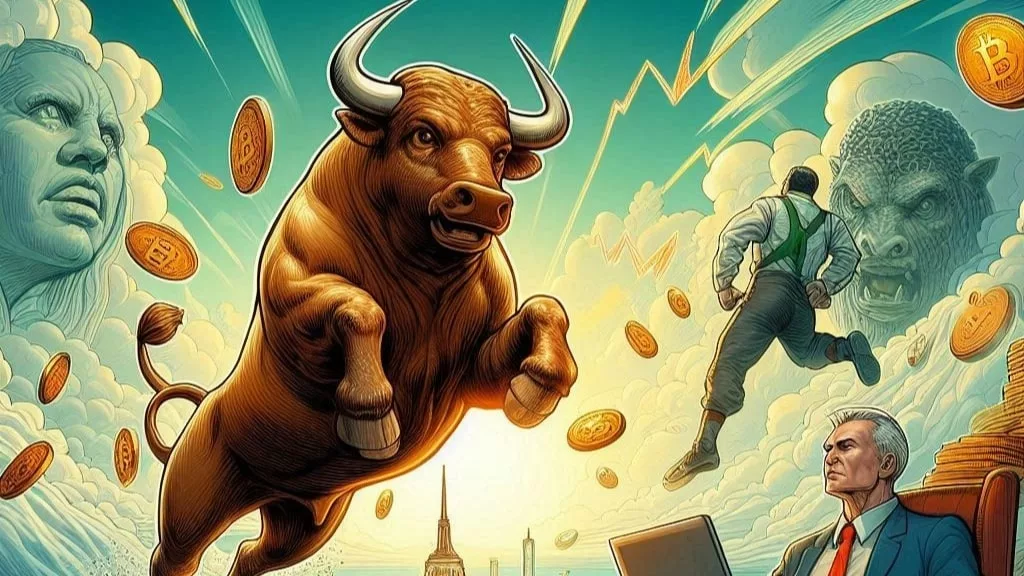
Bitcoin (BTC) has made impressive strides over the past year, but recent comments from Federal Reserve Chair Jerome Powell have raised concerns about the future of the crypto market. Despite BTC’s dominance over the cryptocurrency space, Powell’s firm commitment to continuing Quantitative Tightening (QT) could potentially delay the much-anticipated bull run. As the global economic landscape evolves, investors are left wondering if the crypto market will be able to sustain its momentum or if the looming threat of restrictive monetary policies will stall progress.
During his testimony on February 11, 2025, Powell made it clear that the Federal Reserve would not be turning back to Quantitative Easing (QE) anytime soon. In his remarks, Powell stated that QE is typically considered only when interest rates are at zero, a scenario that is far from the current state of the economy. Instead, he reaffirmed the central bank’s ongoing commitment to QT, which involves tightening the money supply by reducing asset purchases and maintaining higher interest rates.
For the crypto community, Powell’s stance is a crucial development. Many had hoped that the Fed would soon pivot toward more accommodative monetary policies, potentially sparking another major rally in Bitcoin and other cryptocurrencies. However, with no sign of an immediate policy shift, Bitcoin’s next major price surge could be further off than initially expected.
Powell’s remarks have sparked mixed reactions within the crypto community. Some analysts and investors view the Fed’s commitment to QT as necessary for long-term economic stability. Macro analyst Alex Krüger, for example, posted on X (formerly Twitter), stating, “We are ages away from QE—some people needed to hear this.” Krüger’s comment reflects a broader sentiment that while QE could be beneficial in times of economic distress, its absence may ultimately be healthier for the economy in the long run.
On the other hand, some members of the community, including crypto analyst Kevin, express concerns about the implications of QT for Bitcoin’s dominance. Kevin noted that Bitcoin’s market dominance has never peaked during periods of QT, where central banks reduce liquidity by either selling assets or keeping interest rates high. This observation suggests that Bitcoin’s dominance could remain stagnant or even decline unless there is a significant shift in monetary policy.
Felix Jauvin, host of the On the Margin podcast, offered a more optimistic perspective. He emphasized that the global economy could be entering a “golden age,” where traditional monetary dominance plays a lesser role in driving financial markets. “This is a good thing,” Jauvin said, suggesting that the financial world may be evolving beyond the need for continuous QE interventions.
The key question on the minds of investors and analysts is whether Bitcoin’s dominance will continue, or if a change in monetary policy could reignite a bull run. Bitcoin’s performance remains solid, but its market dominance has been relatively stable, with no significant surges in recent months. The long-standing expectation of an “altcoin season,” in which altcoins would experience rapid growth, may not materialize unless there is a clear shift in the Federal Reserve’s policy stance.
While some analysts predict that we could see a change in the macroeconomic landscape as soon as Q2 2025, others caution that Powell’s current approach could continue to dampen market enthusiasm. Without the liquidity boost that QE provides, it is unlikely that altcoins will experience the same explosive growth they did during previous cycles. Instead, Bitcoin may continue to dominate the market, holding its position as the leading cryptocurrency by market capitalization.
The timing of Powell’s comments coincided with the release of the Federal Reserve’s semi-annual monetary report to the U.S. Congress on February 12, 2025. In his report, Powell reiterated that the Federal Reserve was not in a rush to alter its current monetary policy. While this approach is designed to prevent inflation from spiraling out of control, it also signals that the broader economy, including the cryptocurrency market, will likely face continued challenges in the near term.
Despite these challenges, the crypto market has shown remarkable resilience. As of February 13, 2025, the global market capitalization reached $3.19 trillion, marking a 1.35% increase over the previous day. Bitcoin itself was trading at $96,009.53, with a modest 0.04% increase in the last 24 hours. These figures suggest that, while the broader economic outlook remains uncertain, Bitcoin continues to retain its position as the flagship digital asset.
For now, the future of Bitcoin and the broader cryptocurrency market seems tied to the ongoing policies of the Federal Reserve. Powell’s firm stance on QT leaves little room for optimism regarding an immediate policy shift, which means the next major rally in Bitcoin could be delayed.
However, there is still hope among analysts that a change in the economic landscape could trigger a new phase of growth. As we move toward the second quarter of 2025, market participants will be closely watching for any signs of a shift in Federal Reserve policy or other macroeconomic factors that could spark a change in Bitcoin’s trajectory.
Until then, Bitcoin’s dominance in the crypto space remains intact, but the broader market will need to navigate through uncertain waters as it awaits the next catalyst for growth. Whether that catalyst will come in the form of a policy shift or a broader market change remains to be seen. For now, the Bitcoin bull run seems to be on hold—but how long will it last? Only time will tell.
Get the latest Crypto & Blockchain News in your inbox.